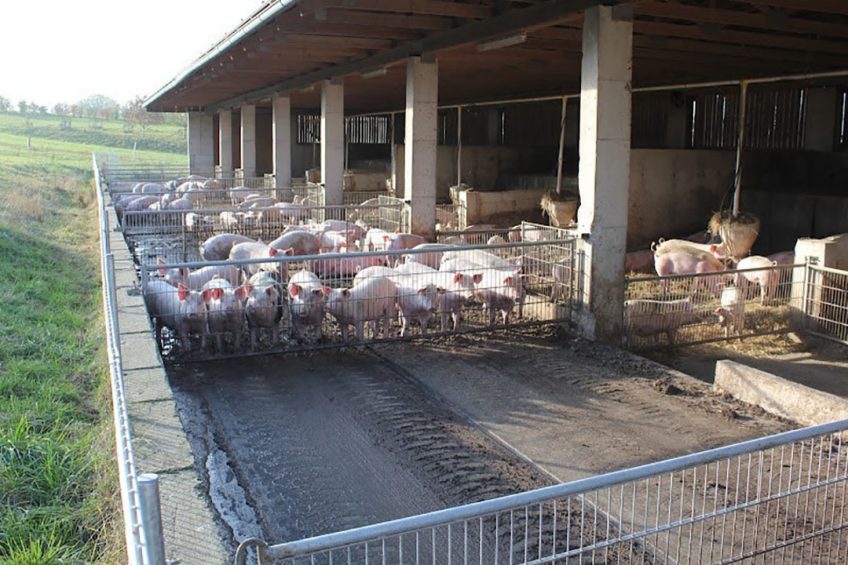Pig farming beyond zinc oxide and antibiotics

As the end of therapeutic zinc oxide (ZnO) and in-feed antibiotics approaches, sharing knowledge and experiences is becoming more and more important. The Irish research organisation Teagasc just started a big project on alternatives to ZnO and antibiotics. Health and nutrition expert Edgar Garcia Manzanilla shares his views on this.
I loved the recent comment by Lisbeth Shooter about the summit on ZnO that she is chairing next June in Denmark: “…It is not a conference where we will be looking at e.g. detailed in vitro studies or complex microbiome research, which is very far from being put into practical use.” And she is right, research projects are often cooked in an office where discussion of research publications and data is maximised but contact with farms is, unfortunately, scarce.
Weaning diarrhoea, a very diverse problem
On paper, the problem of weaner pigs is very well defined; piglets are weaned too early, mixed with other litters, new feed, new environment, stress, E. coli, anorexia… and the situation becomes a mess resulting in diarrhoea episodes too many times.
In reality, there are as many problems as farms. Nowadays, anorexia after weaning is something from the past in many farms and piglets eat even too much. Facilities for weaner pigs are often high-tech buildings with precise environmental control.
Nutrition is as good (and as expensive) as baby formulas… so what is wrong in these situations? I am not sure we can answer this question with one answer. We are currently visiting the commercial farms that will be enrolled in project ‘Zinco’ and one thing is clear: Each one of the farms is a different world, with different problems, but they found in ZnO and antibiotics an easy common solution.
Piglets are basically babies
Here I would like to share a thought with you. Piglets are basically babies, a little bit more autonomous than humans at same age, but the piglet immune and digestive systems are similar to those of a baby. Now, would you leave your baby to sleep in a room on top of the faeces of hundreds other babies?
Common sense tells me you would not. Who decided to build slurry tanks below the pigs? Piglets will enter a clean room, with good temperature, good feed… and quite often an overload of ammonia. Try sleeping one night with your piglets.
Read more Expert Opinions by Edgar Garcia Manzanilla and many others
The importance of air quality to pig health
Lucky enough there are people that is challenging this common practice and looking for creative alternatives. A couple of weeks ago we had the opportunity to visit one of the 300 farms of the Duurzaam Varkensvlees group in the Netherlands. They have realised how important air quality is to pig health and instead of trying to remove ammonia from the rooms they asked themselves… why are we keeping slurry in the room? And from this idea they have developed what they call a ‘toilet’ for their pigs.
The toilet is basically a tank that uses waste water to flush the slurry avoiding ammonia building up in the room. The website is in Dutch but just take a look at the pictures and you will get the idea. It is worth a visit. We need more ideas like this one if we have to live without ZnO and we want to reduce antibiotic use.
Much more than gut health
I was recently asked by a farmer why was I worried about ammonia in his farm if the problem was diarrhoea. He then started a discussion on gut health. Gut health is indeed very important for piglets. However we should keep in mind that there is a whole pig around the gut.

If you look at your pigs you will see many injuries in their legs, infected navels and joints, conjunctivitis, coughing and other health problems. All these small issues affect the pig as a whole and make it more vulnerable to problems like diarrhoea. You will see quite often diarrhoea is solved just by controlling air currents in a room. Even vaccines will work better if you take care of these apparently minor issues.
Not that far from practical use
Finally I would like to go back to Lisbeth’s comment on “…complex microbiome research, which is very far from being put into practical use”.
Actually, it is not.
This is very complex methodology but can be applied to the field today and is cheaper than, for example, a feed analysis. Building databases on variability of microbial populations between farms, between management systems and other factors is something needed and can be done now.
Obviously it’s much easier to do a trial in a research facility, present it in a congress and move to the next trial. However we need this research to be done in commercial farms.
In a previous opinion I discussed the similarities of the use of zinc in pigs and humans to control diarrhoea. All the work on the use on zinc in humans has been done in the field and the results are even better than those we got for pigs.











